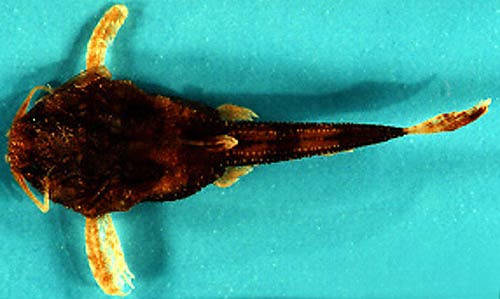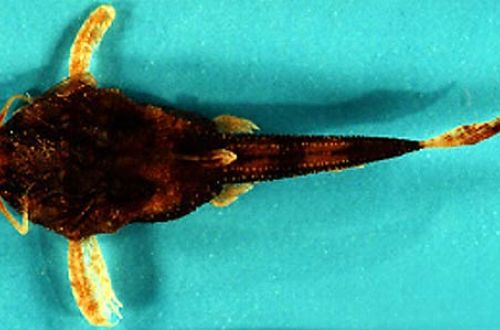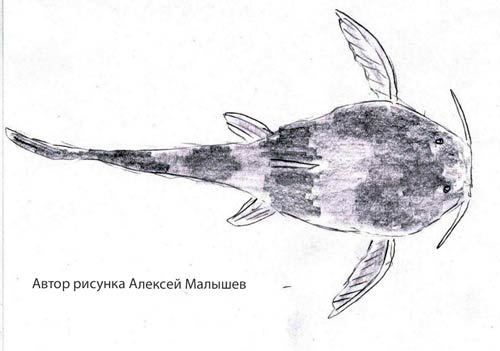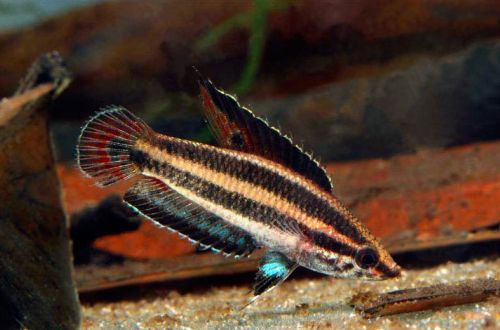
Catfish banjo
The banjo catfish, scientific name Acanthobunocephalus nicoi, belongs to the family Aspredinidae. Aquarists in North America have nicknamed it the “Banjo Cat” because of its resemblance to the musical instrument of the same name. Later this name became common.
Contents
Somick Banjo
 Photograph of a banjo catfish (top view) showing features of the body shape
Photograph of a banjo catfish (top view) showing features of the body shape

Habitat
The fish is native to South America. Found in a limited area in the upper Orinoco basin in Venezuela and Colombia. Inhabits the coastal zones of small rivers and streams flowing under the canopy of the tropical forest. Prefers to stay in the bottom layer, hiding among thickets of aquatic plants, under snags, among plant debris (fallen twigs, leaves, etc.)
Brief information:
- The volume of the aquarium – from 40 liters.
- Temperature – 20-25°C
- Value pH — 5.5–7.0
- Water hardness – soft (2-10 dGH)
- Substrate type – sandy
- Lighting – subdued
- Brackish water – no
- Water movement is weak
- The size of the fish is about 2 cm.
- Food – any sinking food
- Temperament – peaceful
- Content alone or in a group
Description
Adult individuals reach a length of about 2 cm. The catfish has a flat body with a large head for its size and a narrow caudal peduncle. The pectoral fins have thickened first rays, which have turned into sharp spikes. They are not suitable for swimming and serve the main purpose – protection from small predators. The same purpose is served by hard skin, resembling a shell. Coloration dark grey, brownish. Sexual dimorphism is weakly expressed. There are no visible differences between male and female.
Pencil drawing – Somik Banjo
 Schematic image of a catfish, made in pencil on white paper
Schematic image of a catfish, made in pencil on white paper
This miniature catfish in its appearance resembles another popular species of this catfish family, the snag, which also has a “musical” name – Guttarita.
Maintenance and care, arrangement of the aquarium
It is nocturnal and seeks to hide in shelters during the daytime. In the design, it is important to provide places where the catfish could hide. It can be thickets of plants, various snags and other natural or artificial decorative elements. Another important design element is sandy soil. In it, he will dig in search of food particles and, if necessary, burrow, using instead of shelter.
Refers to omnivores. Will accept most sinking foods of a suitable size. Food should be served shortly before the lights are turned off. When kept together with other species, it will begin to eat up the remnants of food left over from its neighbors in the aquarium.
Optimum conditions are achieved in acidic soft water with a temperature not exceeding 25°C. It is important to maintain the aquarium regularly to prevent the accumulation of organic waste. For fish living on the bottom, this is of particular importance.
Compatible with many other species of comparable size that live in the water column or near the surface.




